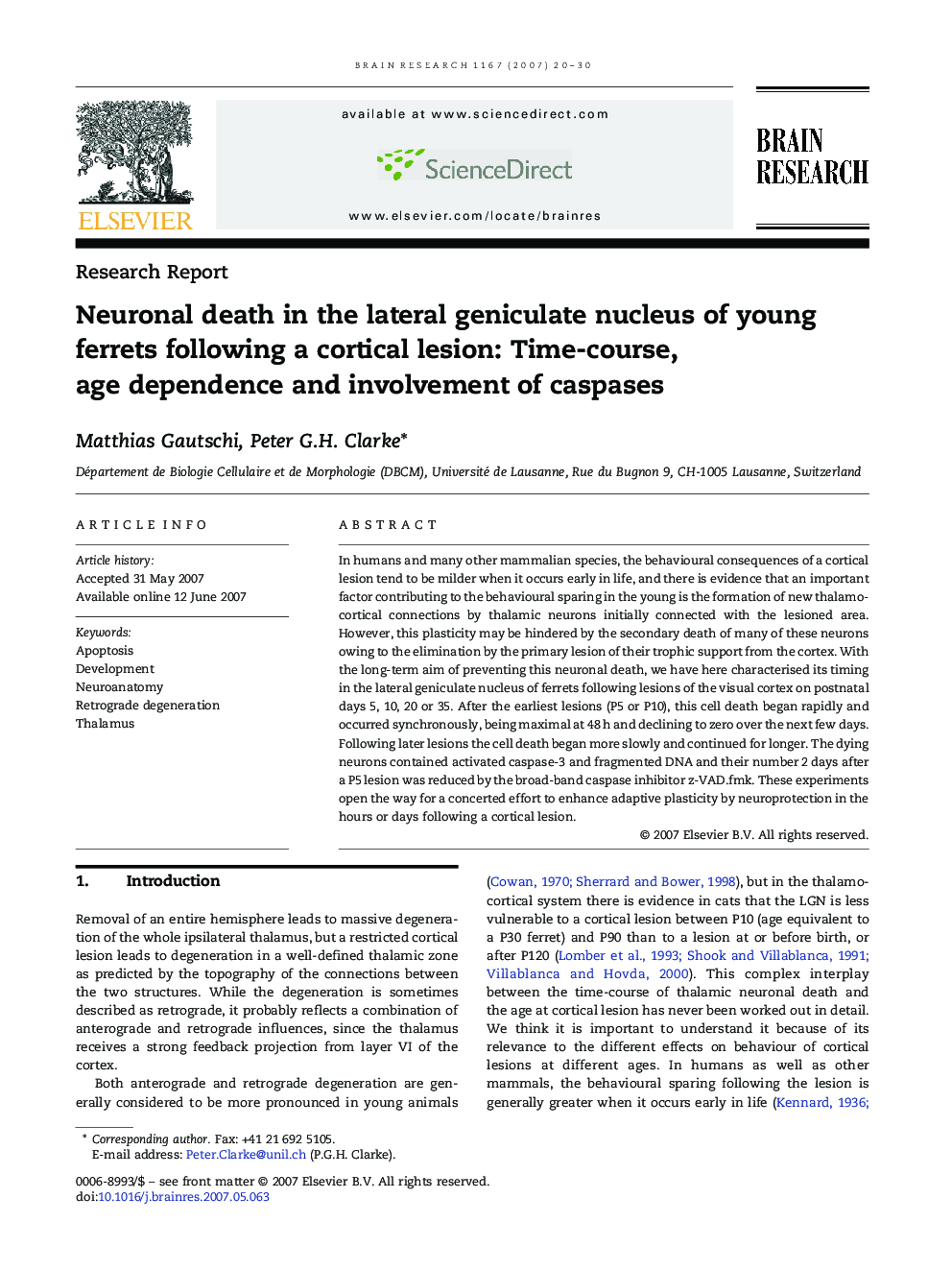| Article ID | Journal | Published Year | Pages | File Type |
|---|---|---|---|---|
| 4330715 | Brain Research | 2007 | 11 Pages |
In humans and many other mammalian species, the behavioural consequences of a cortical lesion tend to be milder when it occurs early in life, and there is evidence that an important factor contributing to the behavioural sparing in the young is the formation of new thalamo-cortical connections by thalamic neurons initially connected with the lesioned area. However, this plasticity may be hindered by the secondary death of many of these neurons owing to the elimination by the primary lesion of their trophic support from the cortex. With the long-term aim of preventing this neuronal death, we have here characterised its timing in the lateral geniculate nucleus of ferrets following lesions of the visual cortex on postnatal days 5, 10, 20 or 35. After the earliest lesions (P5 or P10), this cell death began rapidly and occurred synchronously, being maximal at 48 h and declining to zero over the next few days. Following later lesions the cell death began more slowly and continued for longer. The dying neurons contained activated caspase-3 and fragmented DNA and their number 2 days after a P5 lesion was reduced by the broad-band caspase inhibitor z-VAD.fmk. These experiments open the way for a concerted effort to enhance adaptive plasticity by neuroprotection in the hours or days following a cortical lesion.
